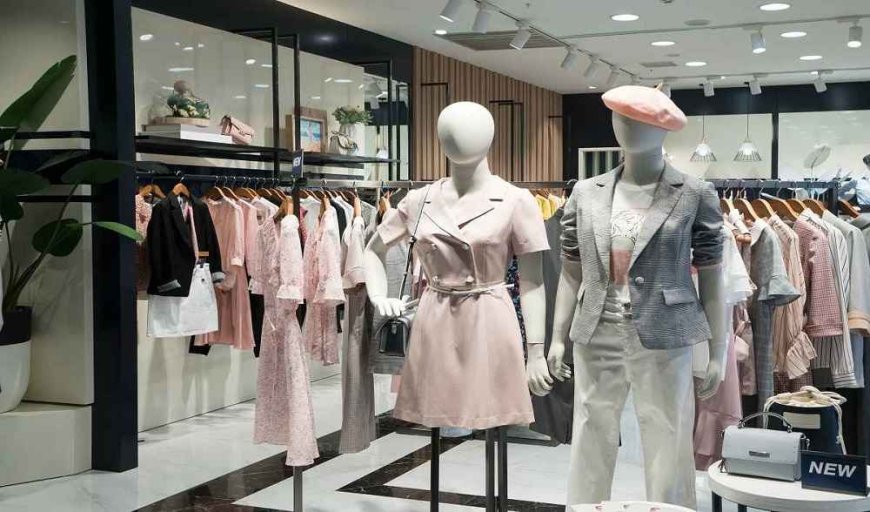The Role of Artificial Intelligence in Fashion
The emergence of artificial intelligence (AI) has sparked debates about its potential to revolutionize various industries.

The emergence of artificial intelligence (AI) has sparked debates about its potential to revolutionize various industries. In the world of fashion, where creativity and artistic expression play vital roles, the question arises: Can AI replace the fashion designer? While AI has shown remarkable capabilities in generating designs and predicting trends, it is important to recognize that it is not a substitute for human creativity. Instead, AI serves as a powerful tool that complements and enhances the work of fashion designers. This article delves into the evolving relationship between AI and fashion design, exploring its current applications and the unique value that human designers bring to the creative process.
AI's Influence in Fashion
AI has made significant inroads in the fashion industry, revolutionizing aspects such as trend analysis, customer insights, and product recommendation systems. Machine learning algorithms can analyze vast amounts of data, including social media trends, runway shows, and consumer preferences, to identify emerging fashion trends. This data-driven approach enables brands to make informed decisions in their design and production processes.
Additionally, AI has been instrumental in improving supply chain management and inventory optimization. By analyzing historical sales data, AI algorithms can predict demand patterns, enabling fashion brands to optimize production quantities and minimize waste. This not only benefits the bottom line but also reduces the industry's environmental footprint.
Design Generation and Inspiration
One of the most intriguing applications of AI in fashion is design generation. AI algorithms can analyze large datasets of existing fashion designs, patterns, and aesthetics to create new designs. This can provide designers with a vast pool of inspiration and aid in generating initial design concepts.
However, it is crucial to note that while AI can produce impressive designs, it lacks the human touch and intuitive creativity that fashion designers bring to their work. Fashion design is not just about aesthetics; it is a deeply personal and emotional process that involves storytelling, cultural influences, and unique perspectives. It is the designer's ability to infuse their designs with these elements that truly captures the essence of fashion.
The Human Element: Creativity and Intuition
Fashion designers possess a unique set of skills that cannot be replicated by AI. Creativity, intuition, and the ability to anticipate and shape trends are intrinsic to the designer's role. Fashion is an art form that conveys individuality, cultural expression, and societal narratives. It requires an understanding of human emotions, desires, and aspirations, which AI cannot fully grasp.
Designers bring their personal experiences, emotions, and cultural backgrounds into their creations, resulting in designs that resonate with consumers on a deeper level. The human touch in fashion design adds an intangible quality that goes beyond aesthetics and engages with the human experience.
Collaboration between AI and Designers
Rather than replacing fashion designers, AI has the potential to be a powerful tool that enhances their creative process. Collaboration between AI systems and designers can result in new possibilities and innovative outcomes. Designers can leverage AI to streamline tedious tasks, such as pattern generation, fabric selection, and sizing optimization, freeing up more time for creative exploration.
AI can also assist designers in exploring alternative design options, providing valuable insights into consumer preferences and market trends. By incorporating AI-generated suggestions and data-driven insights, designers can make more informed decisions while staying true to their artistic vision.
Ethical Considerations and Sustainability
As AI becomes more prevalent in fashion, ethical considerations and sustainability must be at the forefront of its implementation. The fashion industry is increasingly focused on promoting ethical practices, reducing waste, and embracing sustainable materials. Designers play a crucial role in driving these initiatives by making conscious choices in their design processes.
While AI can contribute to sustainability efforts by optimizing supply chains and reducing overproduction, it is up to designers to ensure that sustainability remains a core value in their work. Human designers possess the ability to prioritize ethical practices, incorporate sustainable materials, and advocate for responsible fashion consumption.
In the dynamic landscape of fashion, AI serves as a powerful ally to fashion designers rather than a replacement. While AI can assist in trend analysis, data-driven insights, and design generation, it is the unique blend of human creativity, intuition, and cultural understanding that sets fashion designers apart. The human touch brings emotion, storytelling, and personal experiences into fashion design, captivating consumers and creating connections that go beyond aesthetics.
By embracing AI as a tool and collaborating with its capabilities, fashion designers can unlock new dimensions of creativity, efficiency, and innovation. The future of fashion lies in the harmonious partnership between human designers and AI, leveraging the strengths of both to shape a sustainable and inspiring industry that continues to captivate the world with its artistry and ingenuity.
